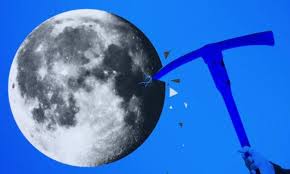
Breaking News
 Elon Tells Rogan the Real Reason Democrats are Prolonging the Government Shutdown [WATCH]
Elon Tells Rogan the Real Reason Democrats are Prolonging the Government Shutdown [WATCH]
 Newsom: Trump Is Trying to Rig the Election -- He Knows GOP Will Lose
Newsom: Trump Is Trying to Rig the Election -- He Knows GOP Will Lose
 There is zero justification for the Department of Justice's silence while the most serious...
There is zero justification for the Department of Justice's silence while the most serious...
 Gabbard Says Trump Has Ended America's Era Of 'Regime Change'
Gabbard Says Trump Has Ended America's Era Of 'Regime Change'
Top Tech News
 Graphene Dream Becomes a Reality as Miracle Material Enters Production for Better Chips, Batteries
Graphene Dream Becomes a Reality as Miracle Material Enters Production for Better Chips, Batteries
 Virtual Fencing May Allow Thousands More Cattle to Be Ranched on Land Rather Than in Barns
Virtual Fencing May Allow Thousands More Cattle to Be Ranched on Land Rather Than in Barns
 Prominent Personalities Sign Letter Seeking Ban On 'Development Of Superintelligence'
Prominent Personalities Sign Letter Seeking Ban On 'Development Of Superintelligence'
 Why 'Mirror Life' Is Causing Some Genetic Scientists To Freak Out
Why 'Mirror Life' Is Causing Some Genetic Scientists To Freak Out
 Retina e-paper promises screens 'visually indistinguishable from reality'
Retina e-paper promises screens 'visually indistinguishable from reality'
 Scientists baffled as interstellar visitor appears to reverse thrust before vanishing behind the sun
Scientists baffled as interstellar visitor appears to reverse thrust before vanishing behind the sun
 Future of Satellite of Direct to Cellphone
Future of Satellite of Direct to Cellphone
 Amazon goes nuclear with new modular reactor plant
Amazon goes nuclear with new modular reactor plant
 China Is Making 800-Mile EV Batteries. Here's Why America Can't Have Them
China Is Making 800-Mile EV Batteries. Here's Why America Can't Have Them
Moon Mining Could Begin As Early As 2025

Using data from the Miniature Radio Frequency (Mini-RF) instrument onboard NASA's Lunar Reconnaissance Orbiter (LRO), a team of researchers came to the conclusion that the lunar subsurface contains a higher concentration of certain metals, such as iron and titanium, than estimated.
The study, published in the journal Earth and Planetary Science Letters, contends the most popular theory surrounding the Moon's origins. The hypothesis contends the satellite was formed when a Mars-sized object collided with Earth, vaporizing large portions of the Earth's upper crust.
"By improving our understanding of how much metal the moon's subsurface actually has, scientists can constrain the ambiguities about how it has formed, how it is evolving and how it is contributing to maintaining habitability on Earth," lead study author Essam Heggy said in a statement.

 China Innovates: Transforming Sand into Paper
China Innovates: Transforming Sand into Paper

